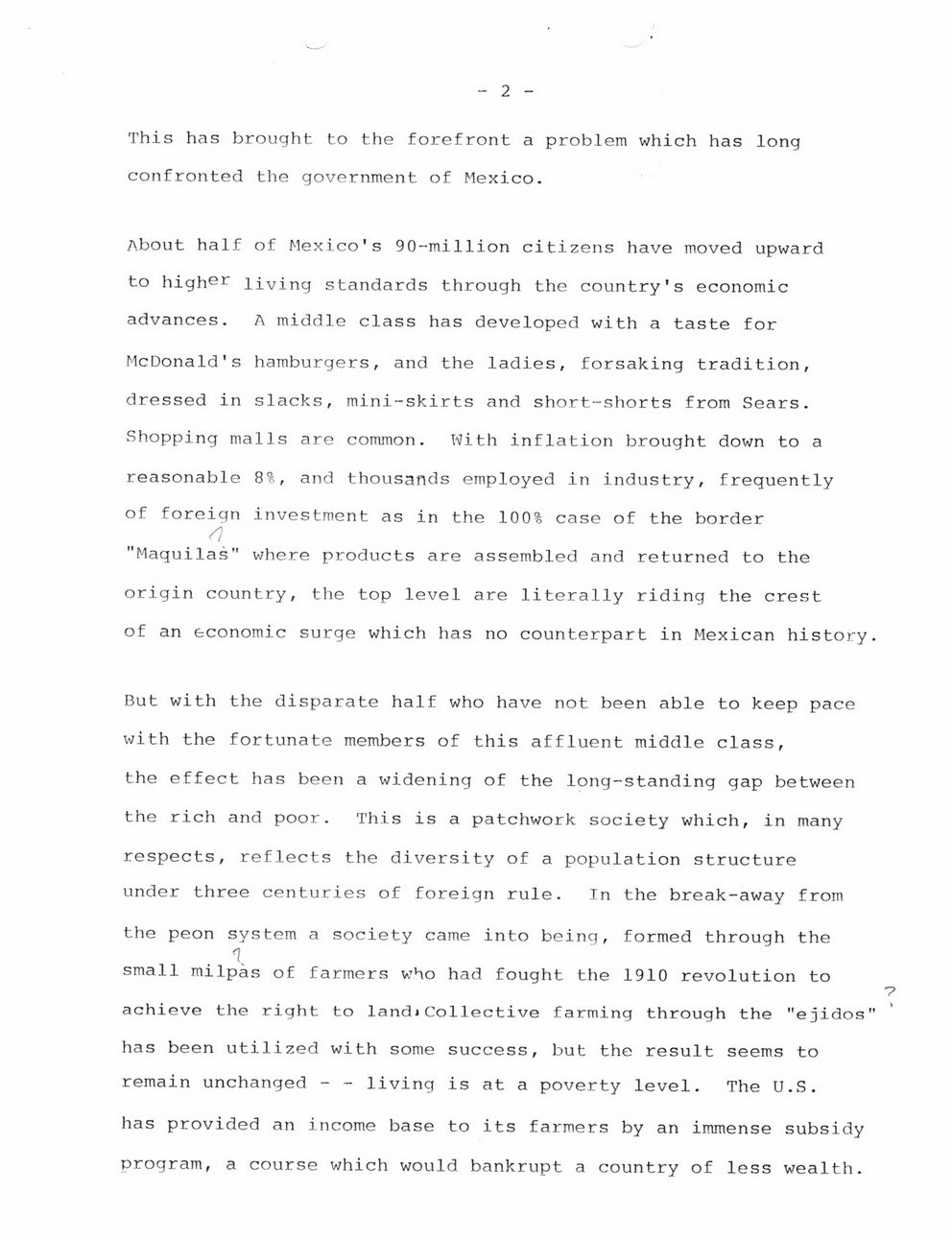This text was obtained via automated optical character recognition.
It has not been edited and may therefore contain several errors.
This has brought to the forefront a problem which has long confronted the government of Mexico. About half of Mexico's 90-million citizens have moved upward to higher living standards through the country's economic advances. A middle class has developed with a taste for McDonald's hamburgers, and the ladies, forsaking tradition, dressed in slacks, mini-skirts and short-shorts from Sears. Shopping malls are common. With inflation brought down to a reasonable 8%, and thousands employed in industry, frequently of foreiqn investment as in the 100% case of the border A "Maquilas" where products are assembled and returned to the origin country, the top level are literally riding the crest of an economic surge which has no counterpart in Mexican history But with the disparate half who have not been able to keep pace with the fortunate members of this affluent middle class, the effect has been a widening of the long-standing gap between the rich and poor. This is a patchwork society which, in many respects, reflects the diversity of a population structure under three centuries of foreign rule. In the break-away from the peon system a society came into being, formed through the small milpas of farmers who had fought the 1910 revolution to achieve the right to land* Collective farming through the "ejidos has been utilized with some success, but the result seems to remain unchanged - - living is at a poverty level. The U.S. has provided an income base to its farmers by an immense subsidy program, a course which would bankrupt a country of less wealth.

Perry, Greg 004